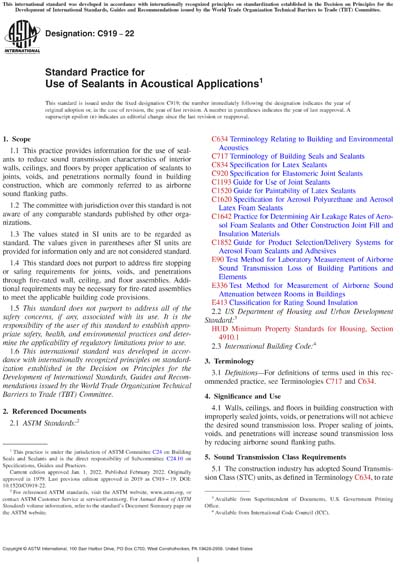Historical
ASTM C919-22
Standard Practice for Use of Sealants in Acoustical Applications
1.1This practice provides information for the use of sealants to reduce sound transmission characteristics of interior walls, ceilings, and floors by proper application of sealants to joints, voids, and penetrations normally found in building construction, which are commonly referred to as airborne sound flanking paths.
1.2The committee with jurisdiction over this standard is not aware of any comparable standards published by other organizations.
1.3The values stated in SI units are to be regarded as standard. The values given in parentheses after SI units are provided for information only and are not considered standard.
1.4This standard does not purport to address fire stopping or safing requirements for joints, voids, and penetrations through fire-rated wall, ceiling, and floor assemblies. Additional requirements may be necessary for fire-rated assemblies to meet the applicable building code provisions.
1.5This standard does not purport to address all of the safety concerns, if any, associated with its use. It is the responsibility of the user of this standard to establish appropriate safety, health, and environmental practices and determine the applicability of regulatory limitations prior to use.
1.6This international standard was developed in accordance with internationally recognized principles on standardization established in the Decision on Principles for the Development of International Standards, Guides and Recommendations issued by the World Trade Organization Technical Barriers to Trade (TBT) Committee.
ASTM International [astm]

